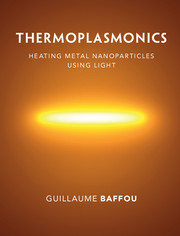This chapter is intended to present all the applications based on the use of metal nanoparticles as nanosources of heat, namely protein denaturation, photothermal cancer therapy, drug and gene delivery, heat-assisted magnetic recording, photoacoustic imaging, plasmonic-induced nanochemistry, photothermal imaging, solar steam generation generation and single living cell experiments. For each application, particular attention will be paid to (i) the pioneering works and how the thematics were born, (ii) the subsequent pivotal works that introduced the variants and new concepts and (iii) the current state of the art and remaining challenges. For each application, I shall also adopt a chronological, story-like description, and occasionally propose various reading templates (chronological, experimental, theoretical, …), even if it yields redundancy.
Protein Denaturation: The Very First Application of Thermoplasmonics (1999)
Although one usually presents photothermal cancer therapy (2003) and photothermal imaging (2002) as the two very first applications of thermoplasmonics, there exists a pioneer article published in 1999 by Hüttmann and Birngruber [87]. This work benefited from the photothermal effects of gold nanoparticles and I believe this work can be considered as the very first article reporting on an application of thermoplasmonics. This is the reason why I dedicate a full section to this article, although protein denaturation cannot be considered as an important application of thermoplasmonics today. The last section of this chapter, dedicated to the application in biology, will be the occasion to recall this work.
The idea of this article was to study the thermal-induced denaturation of proteins using a pulsed laser to heat gold nanoparticles. At that time, the authors already understood that the temporal and spatial confinement achieved when heating nanoparticles with a subnanosecond laser could help achieve temperature as high as 470 K without boiling. The authors evidenced the denaturation of chymotrypsin proteins within 300 ps at temperatures below 380 K. This work was carried out in the context of photothermal treatment of vessels or pigmented cells.
At that time, I do not think the authors realized that most of the problems they raised in this article were about to be the subject of a large number of forthcoming articles. The authors also made correct predictions, for instance when saying: “It is expected that only solid-state absorbing particles (e.g., metal spheres, melanin, graphite, or iron oxide particles) can be used as such an energy acceptor for thermal microeffects.
